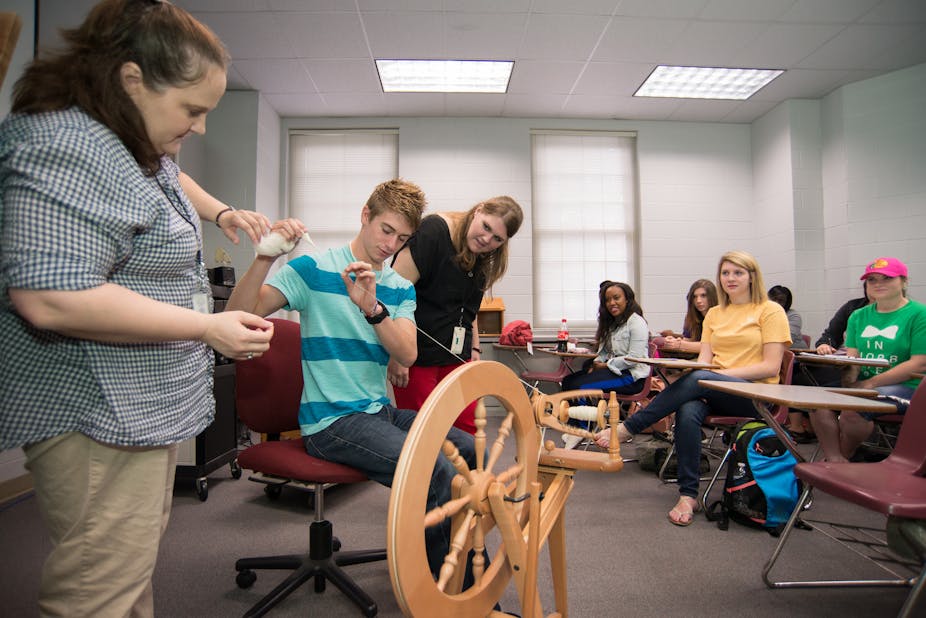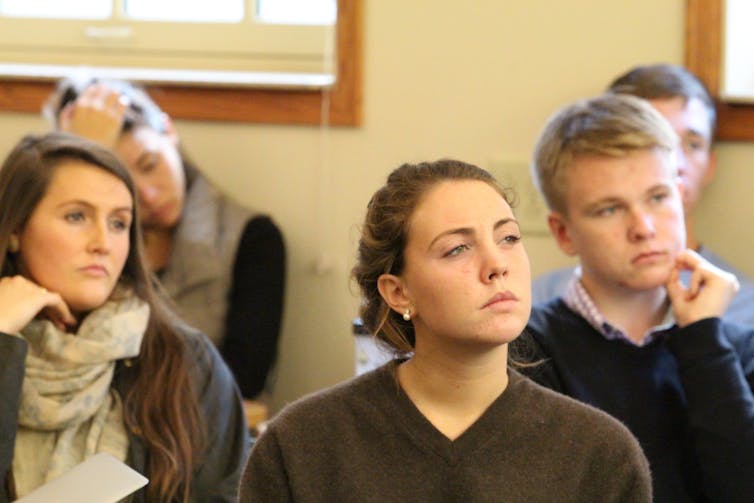The detractors of the liberal arts (who usually mean, by liberal arts, “humanities”) tend to argue that STEM-based education trains for careers while non-STEM training does not; they are often suspicious of the liberal political agenda of some disciplines. And they deem the content of a liberal arts education to be no longer relevant. The author of a recent article simply titled, “The Liberal Arts are Dead; Long Live STEM conveyed this sentiment when he said, "Science is better for society than the arts.”
I see this misunderstanding even at my own institution, as a humanist who oversees pre-major advising and thus engages with students and faculty (and parents) from all over the university. The idea that STEM is something separate and different than the liberal arts is damaging to both the sciences and their sister disciplines in the humanities and social sciences.
Pro-STEM attitudes assume that the liberal arts are quaint, impractical, often elitist, and always self-indulgent, while STEM fields are practical, technical, and represent at once “the future” and “proper earning potential.”
STEM is part of liberal arts
First, let’s be clear: This is a false and misleading dichotomy. STEM disciplines are a part of the liberal arts. Math and science are liberal arts.In the ancient and medieval world, when the liberal arts as we know them began to take shape, they comprised grammar, logic, rhetoric, music, arithmetic, geometry and astronomy (the last three we would count as STEM disciplines today; and music, dealing mostly with numerical relationships through sound, was really more akin to what we would today call physics).
Advocates of STEM are missing the point. The value of a liberal arts education is not in the content that is taught, but rather in the mode of teaching and in the intellectual skills that are gained by learning how to think systematically and rigorously.
These intellectual skills include how to assess assumptions; develop strategies from problem solving; test ideas against evidence; use reason to grapple with information to come to new conclusions; and develop courses of action to pursue those conclusions.
Yes, some disciplines might prepare for certain types of problem solving (how do I get a computer to integrate information from two different consumer data platforms in the most elegant fashion?) more strongly than others (what do I recommend to investors based upon my French-language research of markets in Madagascar?).
And some areas of knowledge might be more useful than others in certain industries.
But in all cases, the point of the liberal arts approach is to learn how to think, not simply what to know – especially since information itself is now so easily acquired through Google and the smartphone. If anything, content is too abundant for any single individual to master. What is much more important is knowing what on Earth to do with the glut of information available in most situations.
And here is where the liberal arts training comes in.
A liberal arts education (STEM-based or otherwise) is not just about learning content, but about knowing how to sort through ambiguity; work with inexact or incomplete information, evaluate contexts and advance a conclusion or course of action.
In other words, it is not about learning the prescription to achieve a textbook result. It is about having the intellectual capacity to attack those issues for which there is yet no metaphorical text or answer.
Is liberal arts the choice of the elite?
Now, let us take up the elephant in the room. Many people would argue an engineering degree balanced with some English courses might be a nice idea.
But for a student to major in English or studio art is sheer craziness. What does one do with a studio art degree except become a starving artist? What does one do with an English degree except wait tables?
Those who make such arguments usually conflate “liberal arts” with “humanities,” those disciplines that do not have an obvious “end career goal” or a “remuneration outcome” at the other side of the college degree.
When detractors hear educators like me say that “the liberal arts” are valuable, they understand us to mean that they fulfill something in the core of our souls. That is, that the humanities are personally and intellectually valuable, but not remuneratively so.
They hear us acknowledge that the humanities are decidedly not practical, and are thus are the purview of the elite and privileged who can afford to indulge in them. But, of course, the idea that the only remunerative professions out there are in science and technology is silly.
Whole industries do in fact exist that are not based on STEM premises: media, consulting, fashion, finance, publishing, education, government and other forms of public service are just a few.
And even those reputedly “tech” industries that STEM advocates see as our future (IT, health, energy) require all sorts of nontechnical employees to get their companies to work.
Further, basic communication, speaking and writing skills are absolute must-haves of anyone who is going to climb the ladder in any high-tech industry.
What defines success
That said, the so-called “practical” major (and I reject the designation) might have a more obvious, path to the entry level job of a solid career. This is only because the major has an apparently known professional pathway.
But that does not guarantee success in that field.
In fact, those other disciplines that detractors of the liberal arts (read: humanities) assume are dead ends could well be fantastic springboards to amazing professional lives.
They are not a guarantee of one – and neither is a STEM degree. But they give those students who have committed seriously to the study of excelling within their college discipline (be it classics, anthropology, or theoretical physics) the capacity and the ability to achieve one.
Some people talk about this as critical thinking; some as the ability to think outside of the box; some as “transferability” – the ability to carry critical intellectual skills from one challenge or industry to another.
In my view, done right, liberal education makes one smarter and more able to be successful and innovative on the path one embarks on. And although we can all point to exceptions (would that Bill Gates had graduated from college!), for the most part, it is those who know how to think nimbly, creatively and responsibly that end up building extraordinary careers.
Why we need a liberal arts education
Let us return to my earlier point about STEM disciplines.We should not only accept that they are part of a liberal arts education, but we must understand that teaching them within a liberal arts framework makes the financial investment of learning them of greater value.
Peter Robbie, an engineering professor at Dartmouth College who teaches human centered design, explains why liberal education is so critical to engineering training. He said in an email to me that:
creative design process of engineering provides the means for complex, multidisciplinary problem-solving. We need to educate leaders who can solve the ‘wicked problems’ facing society (like obesity, climate change, and inequality). These are multifactorial problems that can’t be solved within a single domain but will need liberally-educated, expansive thinkers who are comfortable in many fields.As we know, an engineer who has basic cultural competency skills (honed, for instance, through cultural studies) will be an attractive asset for an American engineering firm trying to branch out in China.
Likewise, a doctor who knows how to listen to patients will be a better primary care doctor than one who only knows the memorizable facts from medical school. This is one reason that medical schools have recently changed the requirements of application to encourage coursework in sociology and psychology.
It is the ability to use these skills honed by different types of thinking in various contexts that allows people to build beyond their particular ken.
And that is what a liberal arts education – science, technology, humanities and social sciences – trains. It prepares students for rich, creative, meaningful and, yes, remunerative, careers.
Did you enjoy this post? Sign up for our "Picasso Creative Writing Newsletter" to get the TOP monthly posts, articles, reports and studies, like this.






